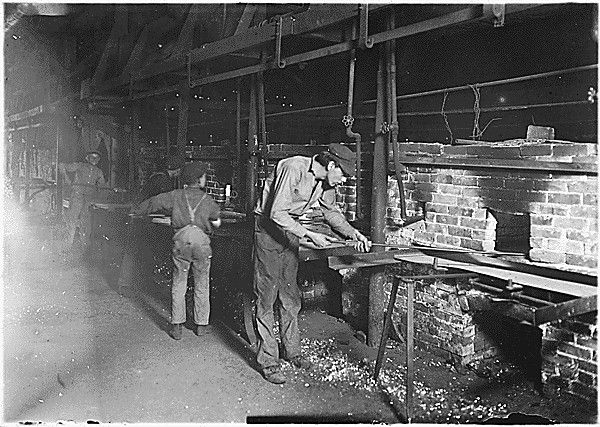Child Labor
Weighing the Evidence
All documents and text associated with this activity are printed below, followed by a worksheet for student responses.Introduction
During the Industrial Age, many children worked to help support their families. The following photographs provide evidence of the circumstances of child labor. Examine the photos and decide which position each photograph supports. The farther out you go along the beam, the stronger the photo supports the position. You can stack photos 4 high so carefully consider where you should place them along the beam. Click on photos in the upper right corner to enlarge them. When you're finished, click on the "I'm Done" tab.Name:
Class:
Class:
Worksheet
Child Labor
Weighing the Evidence
Examine the documents and text included in this activity. Consider how each document does or does not support two opposing interpretations or conclusions. Fill in the topic or interpretations if they are not provided. To show how the documents support the different interpretations, enter the corresponding document number into the boxes near the interpretation. Write your conclusion response in the space provided. Interpretation 1
Children had a responsiblity to help their families earn money. There was nothing wrong with making them work.
Children had a responsiblity to help their families earn money. There was nothing wrong with making them work.
Child Labor during the Industrial Age
Interpretation 2
The risks of child labor far outweighed the benefits of additional income.
The risks of child labor far outweighed the benefits of additional income.
1
Activity Element
Page 1

2
Activity Element
Page 1
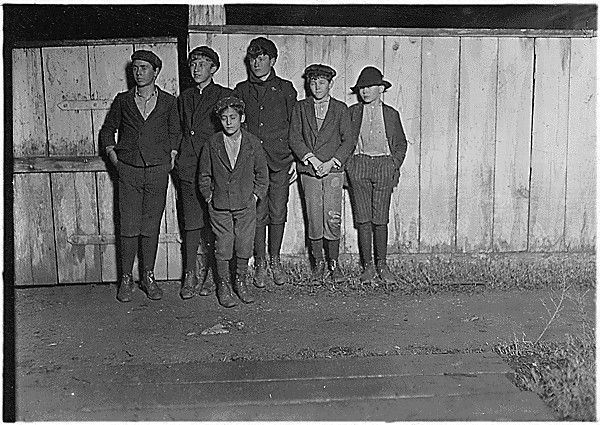
3
Activity Element
Page 2

4
Activity Element
Page 1
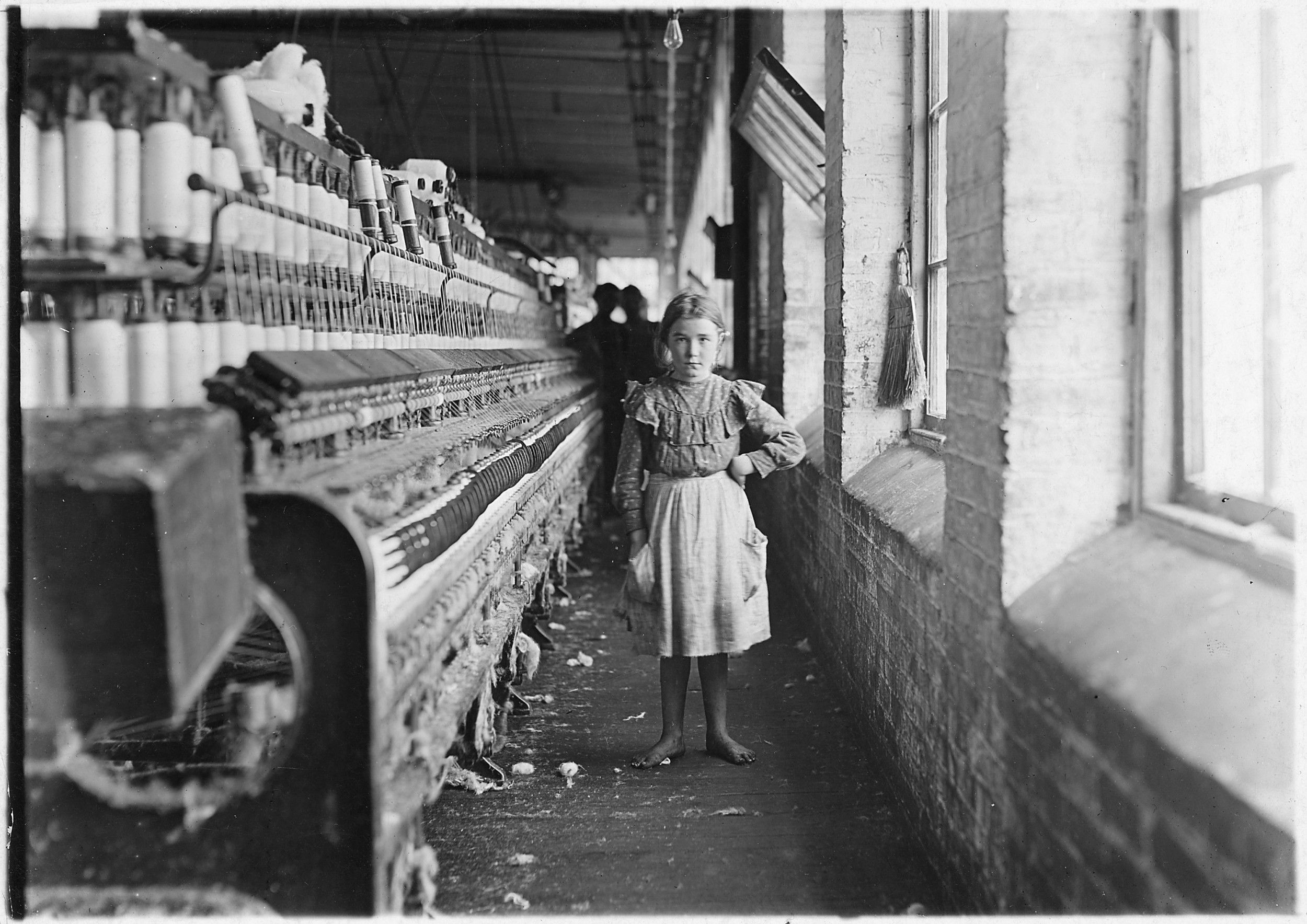
5
Activity Element
Page 1
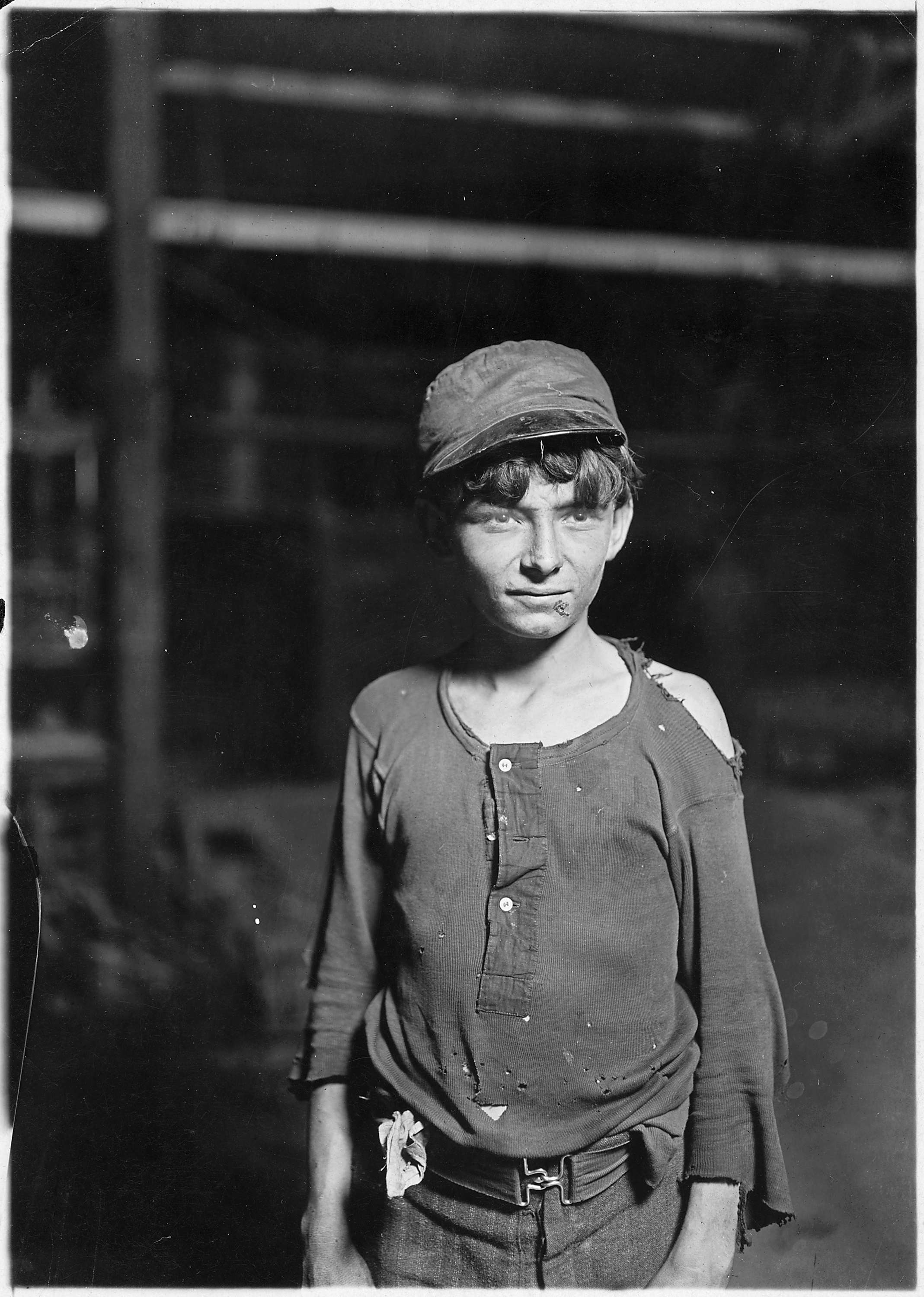
6
Activity Element
Page 1

7
Activity Element
Page 2
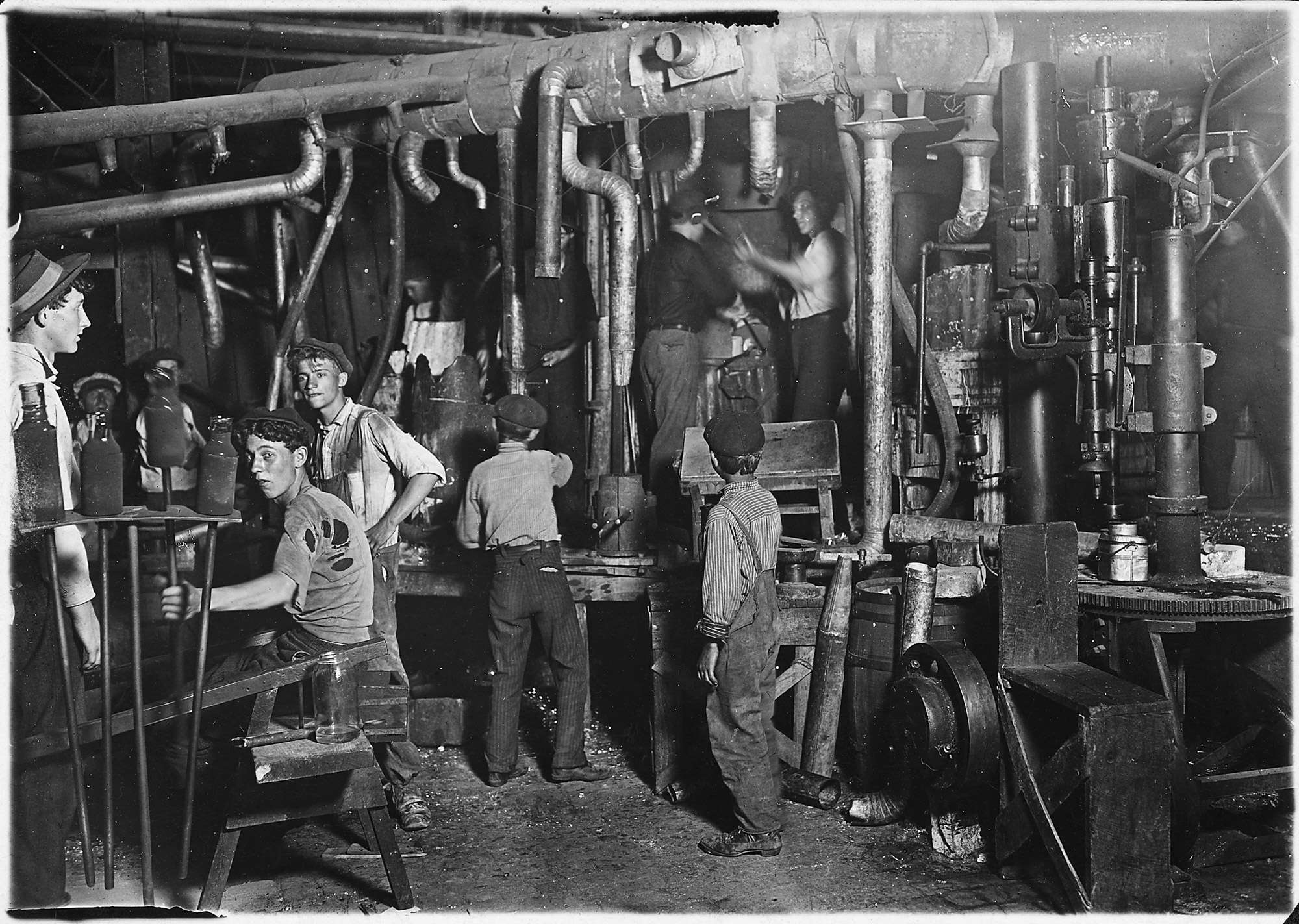
8
Activity Element
9
Activity Element
Page 1
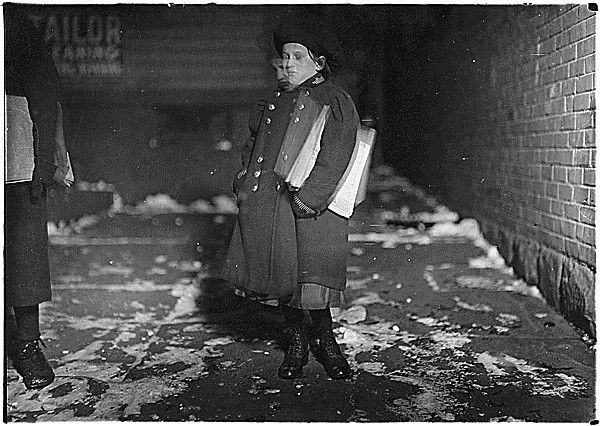
10
Activity Element
Page 1
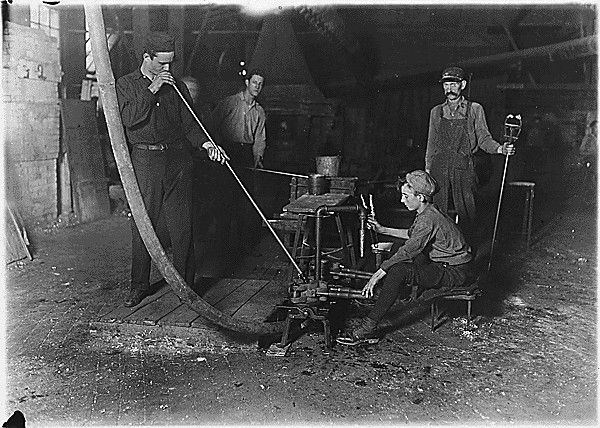
11
Activity Element
Page 2
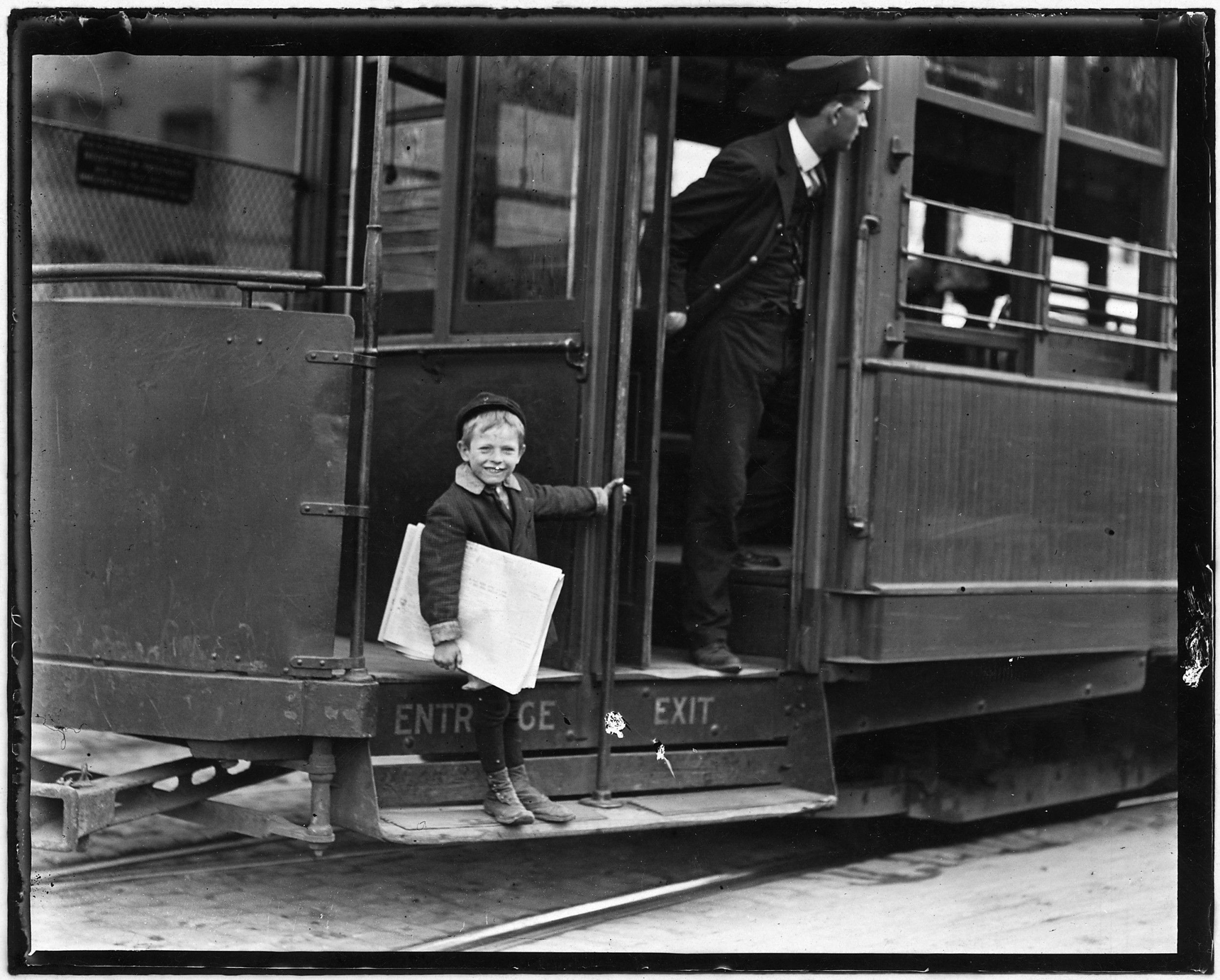
12
Activity Element
Page 1
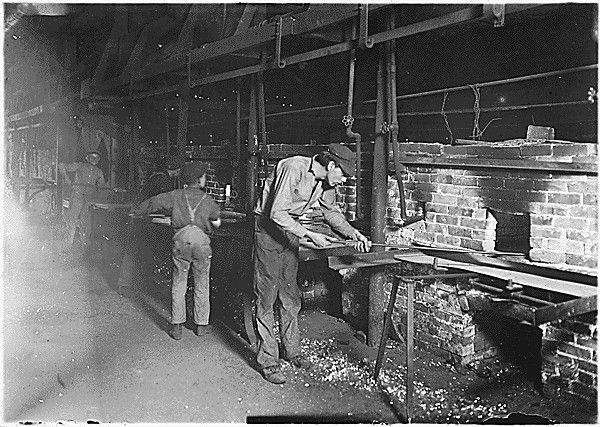
Conclusion
Child Labor
Weighing the Evidence
In the response section of the e-mail, write and finish this prompt: Based on the photo evidence, child labor was helpful/harmful (pick one) because ...Your Response
Document
Photograph of a Young Shrimp Picker Named Manuel
ca. 1912 - 1913
Original caption: Manuel the young shrimp picker, 5 years old and a mountain of child labor oyster shells behind him. He worked last year. Understands not a word of English. Biloxi, Miss.
This primary source comes from the Records of the Children's Bureau.
National Archives Identifier: 523394
Full Citation: Photograph of a Young Shrimp Picker Named Manuel; ca. 1912 - 1913; Records of the Children's Bureau, . [Online Version, https://docsteach.org/documents/document/photograph-of-a-young-shrimp-picker-named-manuel, April 29, 2024]Photograph of a Young Shrimp Picker Named Manuel
Page 1
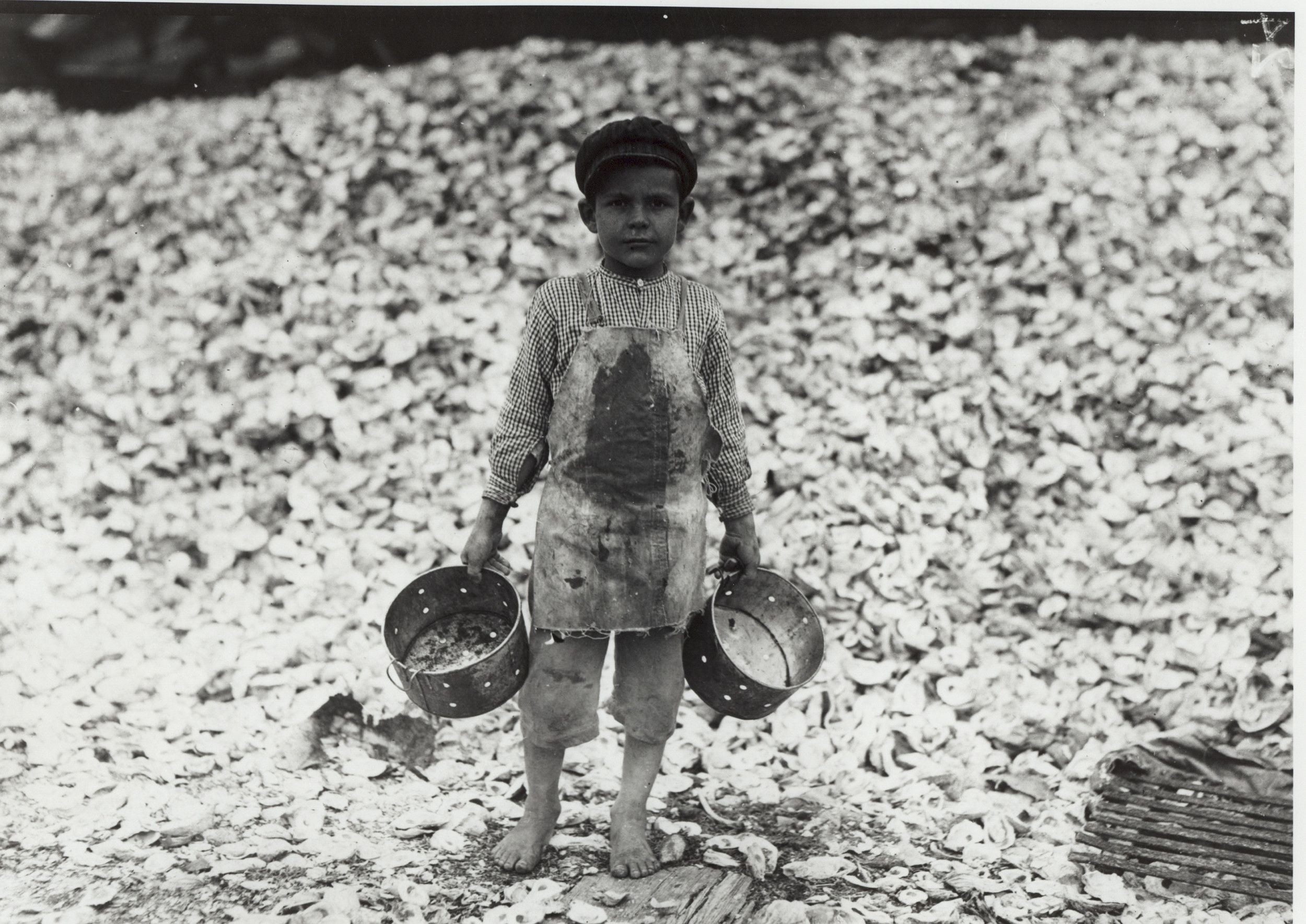
Document
Flashlight photo 6 P.M. going home from King Mfg. Co. Two of the smallest boys been in mill 2 years. One of the larger for 4 years. Augusta, Ga.
1/13/1909
This primary source comes from the Records of the Children's Bureau.
National Archives Identifier: 523150
Full Citation: Flashlight photo 6 P.M. going home from King Mfg. Co. Two of the smallest boys been in mill 2 years. One of the larger for 4 years. Augusta, Ga.; 1/13/1909; Records of the Children's Bureau, . [Online Version, https://docsteach.org/documents/document/flashlight-photo-6-pm-going-home-from-king-mfg-co-two-of-the-smallest-boys-been-in-mill-2-years-one-of-the-larger-for-4-years-augusta-ga, April 29, 2024]Flashlight photo 6 P.M. going home from King Mfg. Co. Two of the smallest boys been in mill 2 years. One of the larger for 4 years. Augusta, Ga.
Page 1
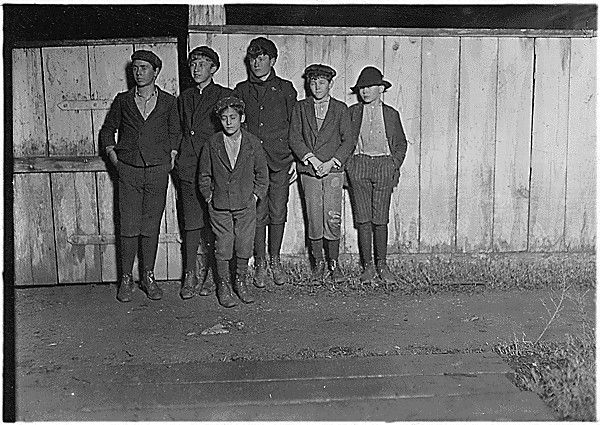
Document
Photograph taken after midnight on April 17, 1912, G St. near 14th. These boys, 10, 11, and 12 years old, were stuck with over fifty papers in their hands, and vowed they would stay until they sold ou
4/17/1912
The title field contains a summary of the notations Lewis Hine typed on the back of the photograph.
This primary source comes from the Records of the U.S. House of Representatives.
National Archives Identifier: 306616
Full Citation: Photograph taken after midnight on April 17, 1912, G St. near 14th. These boys, 10, 11, and 12 years old, were stuck with over fifty papers in their hands, and vowed they would stay until they sold ou; 4/17/1912; Papers Accompanying Specific Bills and Resolutions of the Committee on the District of Columbia from the 63rd Congress; Papers Accompanying Specific Bills and Resolutions, 1903–1972; Records of the U.S. House of Representatives, ; National Archives Building, Washington, DC. [Online Version, https://docsteach.org/documents/document/photograph-taken-after-midnight-on-april-17-1912-g-st-near-14th-these-boys-10-11-and-12-years-old-were-stuck-with-over-fifty-papers-in-their-hands-and-vowed-they-would-stay-until-they-sold-out-if-it-t, April 29, 2024]Photograph taken after midnight on April 17, 1912, G St. near 14th. These boys, 10, 11, and 12 years old, were stuck with over fifty papers in their hands, and vowed they would stay until they sold ou
Page 2

Document
A little spinner in a Georgia Cotton Mill
1/1909
This primary source comes from the Records of the Children's Bureau.
National Archives Identifier: 523157
Full Citation: Photograph 102-LH-545; A little spinner in a Georgia Cotton Mill; 1/1909; National Child Labor Committee Photographs taken by Lewis Hine, ca. 1912 - ca. 1912; Records of the Children's Bureau, ; National Archives at College Park, College Park, MD. [Online Version, https://docsteach.org/documents/document/a-little-spinner-in-a-georgia-cotton-mill, April 29, 2024]A little spinner in a Georgia Cotton Mill
Page 1

Document
A typical glass works boy, night shift. Said he was 16 years old. 1 A.M. Indiana
8/1908
The growth of industry after the Civil War increased the demand for workers and pulled more and more children into the labor force. By 1910, children made up 18.4 percent of the total labor force. The National Child Labor Committee (NCLC), in New York City began investigations with child labor conditions in coal mines, capitalizing on the public concern raised during the nationwide coal miners' strike of 1902. Later, NCLC investigations centered upon the glassmaking industry, textile mills-especially in the South-and the canning industry. Eyewitness accounts produced at the beginning of the 20th century detailed the kind of working conditions of child laborers that the NCLC was investigating and publicizing. One such account, taken from John Spargo's The Bitter Cry of the Children (New York, 1906), describes conditions in a glass factory: I shall never forget my first visit to a glass factory at night...the boys employed, about forty in number, at least ten of whom were less than twelve years of age. It was a cheap bottle factory, and the proportion of boys to men was larger than is usual in the higher grades of manufacture. The hours of labor for the "night shift" were from 5:30 pm to 3:30 am.... Then began the work of the "carrying-in boys," sometimes called "carrier pigeons," [who] took the red-hot bottles from the benches, three or four at a time upon big asbestos shovels to the annealing oven.... The work of these "carrying-in boys," several of whom were less than twelve years old, was by far the hardest of all. They were kept on a slow run all the time from the benches to the annealing oven...was one hundred feet, and the boys made seventy-two trips per hour, making the distance traveled in eight hours nearly twenty-two miles. Over half of these boys varies from sixty cents to a dollar for eight hours' work. In 1908 the NCLC hired Lewis W. Hine to investigate and to photograph the conditions of working children. Text adapted from “Three Photographs of Children At Work, Circa 1908” in the February 1982 National Council for the Social Studies (NCSS) publication Social Education.
This primary source comes from the Records of the Children's Bureau.
National Archives Identifier: 523081
Full Citation: Photograph 102-LH-90; A typical glass works boy, night shift. Said he was 16 years old. 1 A.M. Indiana; 8/1908; National Child Labor Committee Photographs taken by Lewis Hine, ca. 1912 - ca. 1912; Records of the Children's Bureau, ; National Archives at College Park, College Park, MD. [Online Version, https://docsteach.org/documents/document/a-typical-glass-works-boy-night-shift-said-he-was-16-years-old-1-am-indiana, April 29, 2024]A typical glass works boy, night shift. Said he was 16 years old. 1 A.M. Indiana
Page 1

Document
Western Union Messengers on night duty, 10:30 P.M. Left to right, Joseph Strassburg (had just gotten off), Leo Lipschitz, Robert Strassburg (brother of Joseph). Boys could not be over 12 years old. Al
2/12/1910
This primary source comes from the Records of the Children's Bureau.
National Archives Identifier: 523279
Full Citation: Western Union Messengers on night duty, 10:30 P.M. Left to right, Joseph Strassburg (had just gotten off), Leo Lipschitz, Robert Strassburg (brother of Joseph). Boys could not be over 12 years old. Al; 2/12/1910; Records of the Children's Bureau, . [Online Version, https://docsteach.org/documents/document/western-union-messengers-on-night-duty-1030-pm-left-to-right-joseph-strassburg-had-just-gotten-off-leo-lipschitz-robert-strassburg-brother-of-joseph-boys-could-not-be-over-12-years-old-albany-ny, April 29, 2024]Western Union Messengers on night duty, 10:30 P.M. Left to right, Joseph Strassburg (had just gotten off), Leo Lipschitz, Robert Strassburg (brother of Joseph). Boys could not be over 12 years old. Al
Page 1

Document
9 P.M. in an Indiana Glass Works. Indiana
8/1908
The growth of industry after the Civil War increased the demand for workers and pulled more and more children into the labor force. By 1910, children made up 18.4 percent of the total labor force. The National Child Labor Committee, in New York City began investigations with child labor conditions in coal mines, capitalizing on the public concern raised during the nationwide coal miners' strike of 1902. Later, NCLC investigations centered upon the glassmaking industry, textile mills-especially in the South-and the canning industry. In 1908, the NCLC hired Lewis W. Hine to investigate and to photograph the conditions of working children. Text adapted from “Three Photographs of Children At Work, Circa 1908” in the February 1982 National Council for the Social Studies (NCSS) publication Social Education.
This primary source comes from the Records of the Children's Bureau.
National Archives Identifier: 523086
Full Citation: Photograph 102-LH-120; 9 P.M. in an Indiana Glass Works. Indiana; 8/1908; National Child Labor Committee Photographs taken by Lewis Hine, ca. 1912 - ca. 1912; Records of the Children's Bureau, ; National Archives at College Park, College Park, MDonal Archives at College Park, College Park, MD. [Online Version, https://docsteach.org/documents/document/9-pm-in-an-indiana-glass-works-indiana, April 29, 2024]9 P.M. in an Indiana Glass Works. Indiana
Page 2

Document
Photo of boys working in Arcade Bowling Alley. Photo taken late at night. The boys work until midnight and later. Trenton, N.J.
12/20/1909
This primary source comes from the Records of the Children's Bureau.
National Archives Identifier: 523246
Full Citation: Photo of boys working in Arcade Bowling Alley. Photo taken late at night. The boys work until midnight and later. Trenton, N.J.; 12/20/1909; Records of the Children's Bureau, . [Online Version, https://docsteach.org/documents/document/photo-of-boys-working-in-arcade-bowling-alley-photo-taken-late-at-night-the-boys-work-until-midnight-and-later-trenton-nj, April 29, 2024]Photo of boys working in Arcade Bowling Alley. Photo taken late at night. The boys work until midnight and later. Trenton, N.J.
Page 2

Document
A nine year old newsgirl. Hartford, Connecticut.
3/6/1909
Original caption states: "A nine year old newsgirl. She sold later than 8 P.M. sometimes. Been selling two years. Hartford, Conn."
This primary source comes from the Records of the Children's Bureau.
National Archives Identifier: 523174
Full Citation: 102-LH-640; A nine year old newsgirl. Hartford, Connecticut.; 3/6/1909; National Child Labor Committee Photographs taken by Lewis Hine, ca. 1912–ca. 1912; Records of the Children's Bureau, ; National Archives at College Park, College Park, MD. [Online Version, https://docsteach.org/documents/document/nine-year-old-newsgirl-hartford-conn, April 29, 2024]A nine year old newsgirl. Hartford, Connecticut.
Page 1
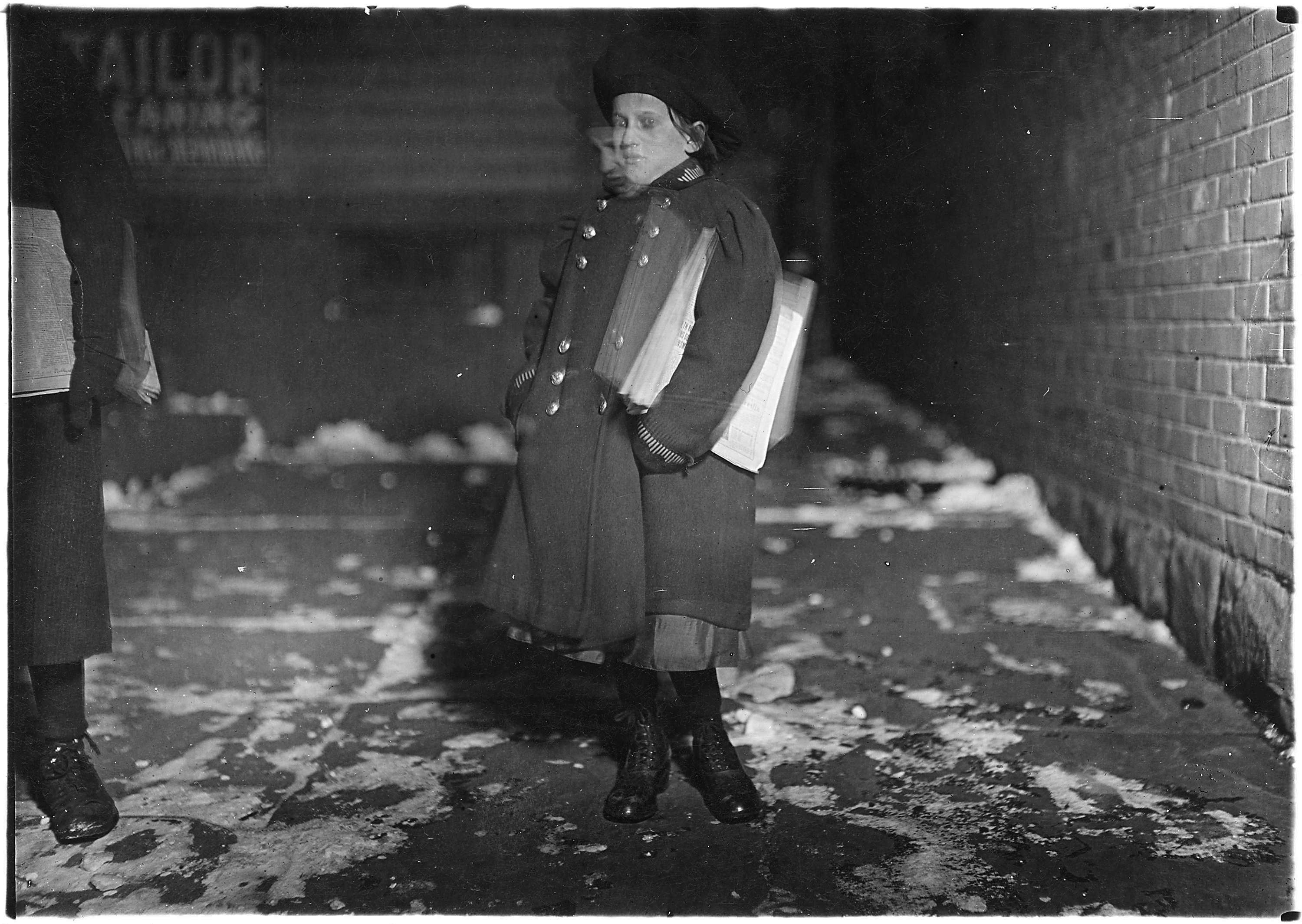
Document
Glass blower and mold boy. Boy has 4 1/2 hours of this at a stretch; then an hour's rest and 4 1/2 more: cramped position. Day shift one week: night shift next. Grafton, W. Va.
10/1908
This primary source comes from the Records of the Children's Bureau.
National Archives Identifier: 523090
Full Citation: Glass blower and mold boy. Boy has 4 1/2 hours of this at a stretch; then an hour's rest and 4 1/2 more: cramped position. Day shift one week: night shift next. Grafton, W. Va.; 10/1908; Records of the Children's Bureau, . [Online Version, https://docsteach.org/documents/document/glass-blower-and-mold-boy-boy-has-4-12-hours-of-this-at-a-stretch-then-an-hours-rest-and-4-12-more-cramped-position-day-shift-one-week-night-shift-next-grafton-w-va, April 29, 2024]Glass blower and mold boy. Boy has 4 1/2 hours of this at a stretch; then an hour's rest and 4 1/2 more: cramped position. Day shift one week: night shift next. Grafton, W. Va.
Page 1
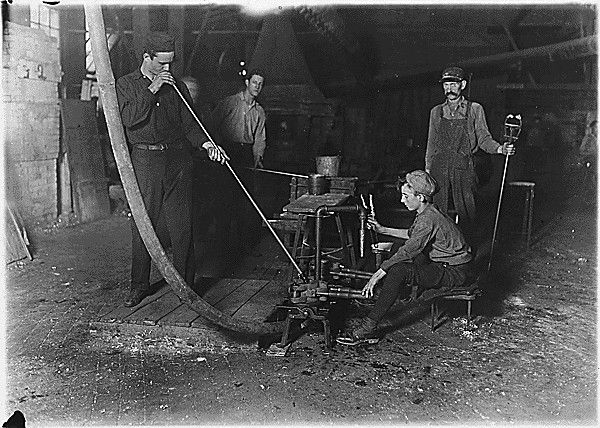
Document
Francis Lance, 5 years old, 41 inches high. He jumps on and off moving cars at risk of life. St. Louis, MO
5/1910
This primary source comes from the Records of the Children's Bureau.
National Archives Identifier: 523295
Full Citation: Francis Lance, 5 years old, 41 inches high. He jumps on and off moving cars at risk of life. St. Louis, MO; 5/1910; Records of the Children's Bureau, . [Online Version, https://docsteach.org/documents/document/francis-lance-5-years-old-41-inches-high-he-jumps-on-and-off-moving-cars-at-risk-of-life-st-louis-mo, April 29, 2024]Francis Lance, 5 years old, 41 inches high. He jumps on and off moving cars at risk of life. St. Louis, MO
Page 2
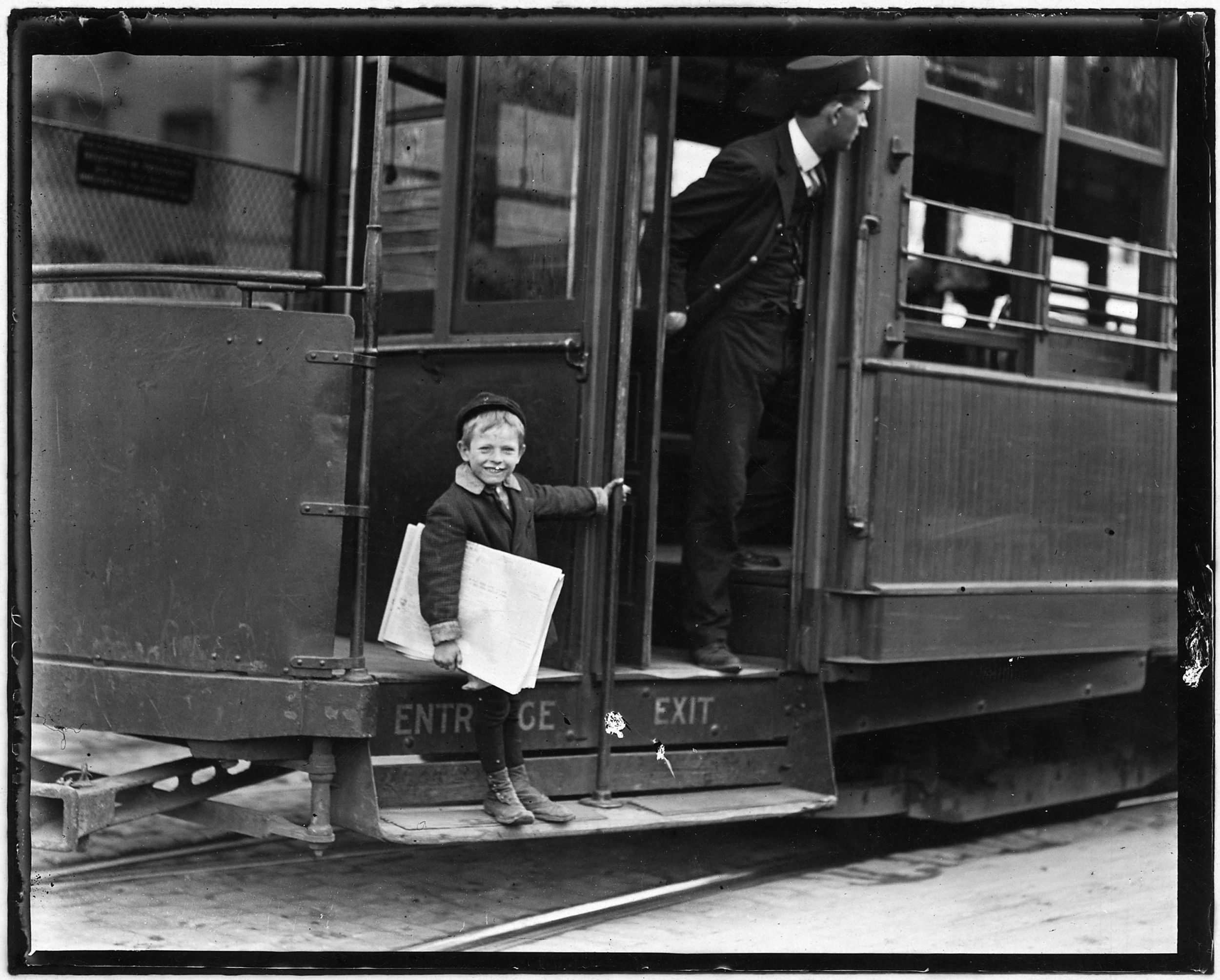
Document
Putting bottles into the Annealing Oven. 1 A.M. Indianapolis, Ind.
8/1908
This primary source comes from the Records of the Children's Bureau.
National Archives Identifier: 523080
Full Citation: Putting bottles into the Annealing Oven. 1 A.M. Indianapolis, Ind.; 8/1908; Records of the Children's Bureau, . [Online Version, https://docsteach.org/documents/document/putting-bottles-into-the-annealing-oven-1-am-indianapolis-ind, April 29, 2024]Putting bottles into the Annealing Oven. 1 A.M. Indianapolis, Ind.
Page 1
